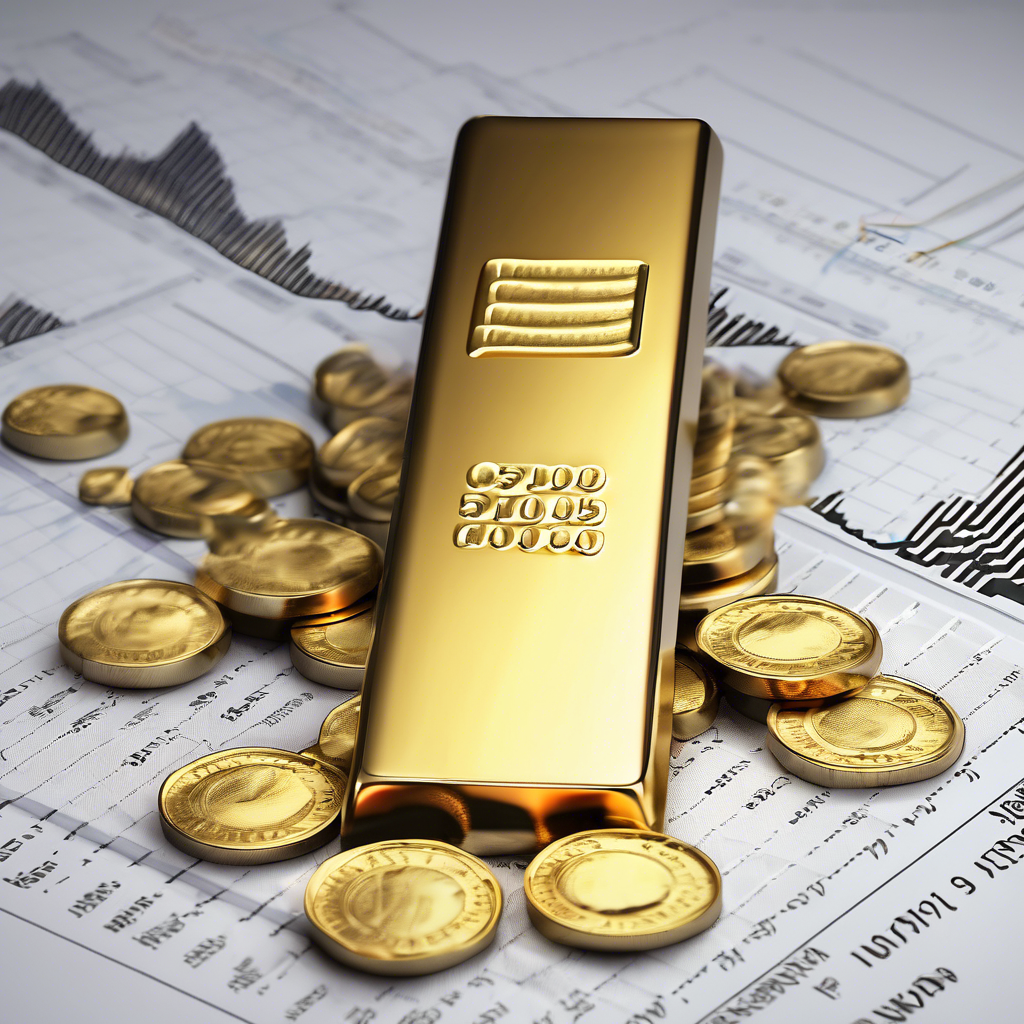Understanding Gold ETFs: A Smart Investment Choice
Investing in gold has long been regarded as a reliable strategy for wealth preservation, especially during economic uncertainty. Gold Exchange-Traded Funds (ETFs) have emerged as a popular vehicle for investors looking to gain exposure to gold without the complexities of physical ownership. In this article, we will explore the best practices for investing in gold ETFs today, ensuring you make informed decisions that align with your financial goals.
Why Choose Gold ETFs Over Physical Gold?
Gold ETFs offer several advantages over traditional physical gold investments. One of the primary benefits is liquidity; ETFs can be bought and sold on stock exchanges during trading hours, allowing for greater flexibility. Additionally, investing in gold ETFs eliminates the need for secure storage and insurance, which can be significant costs associated with holding physical gold.
Accessibility and Lower Costs
Another appealing factor is the accessibility of gold ETFs. Investors can purchase shares in these funds through their brokerage accounts, often with lower transaction fees compared to buying gold bars or coins. For those looking to diversify their investment portfolio, gold ETFs represent an efficient method to gain exposure to the gold market without the overhead of physical assets.
Key Considerations When Investing in Gold ETFs
Before diving into gold ETFs, it’s crucial to understand the various factors that can influence your investment outcomes. Here are some key considerations to keep in mind:
1. Research Available ETFs
Not all gold ETFs are created equal. It’s essential to research the funds available, examining their performance history, management fees, and the underlying assets they hold. Look for funds that have a strong track record and low expense ratios, as these can significantly affect your overall returns.
2. Understand the Market Trends
Keeping an eye on market trends is vital for successful gold ETF investing. Factors such as inflation rates, currency fluctuations, and geopolitical events can impact gold prices. For instance, during periods of economic instability, gold often serves as a safe haven, leading to price increases. Stay informed about these trends to make timely investment decisions.
3. Diversify Your Portfolio
While gold ETFs can provide a hedge against market volatility, it’s essential to avoid over-concentration in any single investment. Diversifying your portfolio by including a mix of assets—such as stocks, bonds, and other commodities—can help mitigate risks and improve your potential returns. For a deeper understanding of gold investment strategies, refer to our guide on effective gold investment strategies.
Final Thoughts on Gold ETFs
Investing in gold ETFs offers a convenient and cost-effective way to incorporate gold into your investment strategy. By understanding the best practices outlined above and staying informed about market conditions, you can maximize your returns and achieve your financial objectives. For further insights into the world of gold investments, check out our post on the future of gold investments.
Strategies for Maximizing Your Gold ETF Investments
As you continue to explore the world of gold ETFs, implementing effective strategies can significantly enhance your investment outcomes. By employing a combination of informed decision-making and market awareness, you can optimize your portfolio’s performance.
1. Timing Your Investments
Understanding market timing is crucial when investing in gold ETFs. While it’s challenging to predict exact price movements, monitoring economic indicators such as inflation rates and interest rate changes can provide valuable insights. For instance, gold prices often rise during periods of inflation, making it a strategic investment during such times. It’s advisable to keep track of how gold prices correlate to global events to better time your investments.
2. Regularly Review Your Portfolio
Periodic portfolio reviews are essential to ensure that your gold ETF investments align with your financial goals. Market conditions can change rapidly, and thus, maintaining flexibility in your investment strategy is vital. Reassess your holdings to determine if adjustments are necessary based on performance data and market trends. This proactive approach will help you stay ahead of market fluctuations.
3. Leverage Dollar-Cost Averaging
Consider employing a dollar-cost averaging strategy when investing in gold ETFs. This approach involves investing a fixed amount of money at regular intervals, regardless of the gold price. Over time, this can reduce the impact of volatility and lower the average cost per share. For further information on effective investment strategies, refer to our guide on effective gold investment strategies.
Understanding the Risks Involved
Like any investment, gold ETFs come with their own set of risks. Being aware of these risks can help you make better investment decisions.
Market Volatility
Gold prices can be highly volatile, influenced by various factors including global economic conditions, changes in currency values, and investor sentiment. This volatility can affect your ETF’s performance. It’s essential to prepare for potential downturns and to have a strategy in place to manage such risks.
Expense Ratios and Management Fees
While gold ETFs generally have lower fees than physical gold investments, they still incur management fees and expense ratios that can impact your overall returns. Always review these costs before selecting a fund, as higher fees can eat into your profits. Look for ETFs with competitive expense ratios to maximize your investment potential.
Exploring Diverse Gold Investment Options
Expanding your horizon beyond gold ETFs can also be beneficial. Consider diversifying your gold investments by exploring options such as gold mining stocks or gold mutual funds. Each investment vehicle has its own risk-reward profile, so understanding these differences can help you build a more robust investment strategy.
Gold Mining Stocks
Investing in gold mining stocks can provide exposure to the gold market with the potential for higher returns. However, these stocks can be influenced by operational risks and market conditions beyond just gold prices. For insights into the best mining stocks to consider, check out our post on top gold stocks to watch in this market.
Gold Mutual Funds
Gold mutual funds invest in a diversified portfolio of gold-related assets, including mining stocks and physical gold. This approach can reduce risk while still providing exposure to gold’s price movements. Understanding the differences between gold ETFs and mutual funds can help you choose the right option for your investment goals.
Conclusion
Investing in gold ETFs presents an opportunity for both novice and seasoned investors to gain exposure to this precious metal. By implementing sound strategies and staying informed about market conditions, you can navigate the complexities of gold investments effectively. For additional guidance, explore our post on the future of gold price predictions to stay ahead of trends and make informed investment decisions.
Diversifying Your Gold Investment Portfolio
To mitigate risks and enhance potential returns, diversifying your gold investment portfolio is essential. By exploring various avenues, you can balance your exposure to the gold market and protect against volatility. Consider including a mix of different gold investment options such as gold ETFs, mining stocks, and physical gold in your strategy.
1. The Role of Gold Mining Stocks
Gold mining stocks offer investors a unique opportunity to gain exposure to the gold market. Unlike gold ETFs, these stocks can provide higher returns, especially if the mining company performs well. However, it’s crucial to understand the inherent risks involved, including operational challenges and market fluctuations. For a detailed analysis of the best mining stocks to consider, visit our post on top gold stocks to watch in this market.
2. Investing in Physical Gold
Physical gold, such as bullion or coins, remains a popular choice among investors. This tangible asset allows you to hold a piece of the precious metal, providing a sense of security against market downturns. However, investing in physical gold requires careful consideration of storage and insurance costs. To learn more about buying physical gold effectively, check out our guide on how to buy gold tips from experienced dealers.
Understanding the Gold Market Dynamics
The gold market is influenced by numerous factors, making it vital to stay informed about current trends. Understanding these dynamics can help you make informed investment decisions. Factors such as geopolitical events, inflation rates, and currency fluctuations play a significant role in determining gold prices.
1. Geopolitical Influences on Gold Prices
Gold often serves as a safe-haven asset during times of geopolitical uncertainty. Investors flock to gold when there are concerns about global stability, driving up its price. Keeping abreast of international events and economic reports can provide insights into when to invest in gold. To explore how gold prices correlate to global events, read our article on how gold prices correlate to global events.
2. Inflation and Currency Value
Inflation can significantly impact gold prices, as gold is traditionally viewed as a hedge against inflation. When the value of currency declines, the price of gold typically rises, making it an attractive investment during inflationary periods. Understanding inflation trends is crucial for timing your investments effectively. For insights on inflation’s impact on gold demand, check our post on gold demand trends.
Conclusion
Investing in gold through diverse avenues can enhance your portfolio’s performance while mitigating risks. By staying informed about market dynamics and incorporating various gold investment strategies, you can navigate the complexities of this market effectively. For further insights into effective strategies for gold investments, explore our guide on effective gold investment strategies.
Evaluating Gold Investment Trends for 2025
As you look ahead to 2025, it’s crucial to analyze evolving gold investment trends. Market conditions, investor sentiment, and technological advancements in gold trading are significant factors that can impact your investment strategy. By staying informed, you can better position yourself to capitalize on opportunities.
1. The Impact of Technological Advancements
In recent years, technology has transformed the way investors engage with the gold market. Digital platforms enable easier access to gold trading, making it more convenient for both novice and seasoned investors. Understanding these technological shifts is vital for maximizing your investment potential. Explore our post on exploring the basics of gold trading techniques to gain insights into how to leverage these advancements.
2. The Importance of Market Research
Conducting thorough market research is essential for successful gold investments. Being aware of price forecasts, supply and demand trends, and economic indicators can provide a clearer picture of the market landscape. For a comprehensive overview of gold price forecasts and what to expect in the upcoming year, check out our article on gold price forecast.
Strategies for Smart Gold Trading
To navigate the complexities of the gold market, employing effective trading strategies is critical. Understanding the market dynamics and timing your trades can significantly enhance your investment outcomes.
1. Utilizing Gold ETFs for Flexibility
Gold ETFs (Exchange-Traded Funds) offer a flexible investment option for those looking to diversify their portfolios. These funds track the price of gold and can be traded like stocks, allowing for easy entry and exit from positions. To learn how to approach gold ETFs for maximizing returns, visit our post on how to approach gold ETFs.
2. Monitoring Global Economic Indicators
Global economic indicators such as interest rates, inflation, and geopolitical stability directly impact gold prices. By staying abreast of these factors, you can make informed decisions about when to buy or sell gold. Understanding how gold prices react to market changes is essential for effective trading. For more information, see our article on how gold prices react to market changes.
Conclusion
As you prepare for 2025, understanding the evolving landscape of gold investments is crucial for successful trading. By leveraging technology, conducting thorough market research, and staying informed about economic indicators, you can enhance your investment strategy. For further insights into gold investment strategies, explore our guide on top gold investment strategies for 2025.
Frequently Asked Questions about Gold Investment
1. What are the benefits of investing in gold?
Investing in gold offers several advantages, including a hedge against inflation, portfolio diversification, and a safe haven during economic uncertainty. Gold can retain its value over time, making it a reliable asset for long-term investors.
2. How can I start investing in gold?
To start investing in gold, you can purchase physical gold such as coins or bullion, invest in gold ETFs, or buy shares in gold mining companies. It’s essential to determine your investment goals and choose the method that aligns with your strategy.
3. What are the risks associated with gold investments?
Gold investments carry risks such as price volatility, lack of dividends, and storage costs for physical gold. Understanding the market dynamics and keeping up with economic indicators can help mitigate these risks.
4. How does gold pricing work?
Gold pricing is influenced by various factors, including supply and demand, economic conditions, and geopolitical events. Investors should monitor these factors to make informed trading decisions.
5. Are gold ETFs a good investment?
Gold ETFs can be a good investment for those seeking liquidity and ease of trading. They provide exposure to gold prices without the need for physical storage. However, it’s crucial to analyze the fees and performance of the ETFs you consider.
6. How often should I review my gold investment?
Regularly reviewing your gold investment strategy is vital, especially during market fluctuations or significant economic changes. A review every six months or annually can help you stay aligned with your investment goals.
7. Can I invest in gold through retirement accounts?
Yes, you can invest in gold through retirement accounts by purchasing gold ETFs or using a self-directed IRA that allows physical gold investments. Consult a financial advisor for specific guidelines.
8. What is the best time to invest in gold?
The best time to invest in gold depends on market conditions, economic indicators, and personal financial objectives. Generally, investing during market downturns or when inflation is rising can be advantageous.
9. How can I sell my gold investments?
You can sell your gold investments through various channels, including online dealers, local jewelers, or auction houses. Ensure you research to get the best price for your gold assets.
10. Where can I find reliable information on gold investments?
Reliable information on gold investments can be found on financial news websites, investment blogs, and through expert analysis. Trusted sources include the World Gold Council, Bloomberg, and reputable financial advisors.
Authority Resources for Gold Investment
To enhance your understanding of gold investment strategies and stay updated on market trends, consider exploring the following authoritative resources:
- World Gold Council – A leading authority on gold with insights on market trends and investment strategies.
- Bloomberg – A comprehensive source for financial news, including gold market analysis.
- Investopedia – Offers educational articles and tutorials on gold investing and market dynamics.
- Kitco – Provides live gold prices, market news, and expert commentary.
- Forbes – Features articles on gold investment strategies and economic analyses.
Conclusion
As you prepare for 2025, understanding the evolving landscape of gold investments is crucial for successful trading. By leveraging technology, conducting thorough market research, and staying informed about economic indicators, you can enhance your investment strategy. Remember to utilize the insights from our comprehensive FAQ section and authoritative resources to guide your decisions, ensuring your investments in gold are both strategic and profitable.










